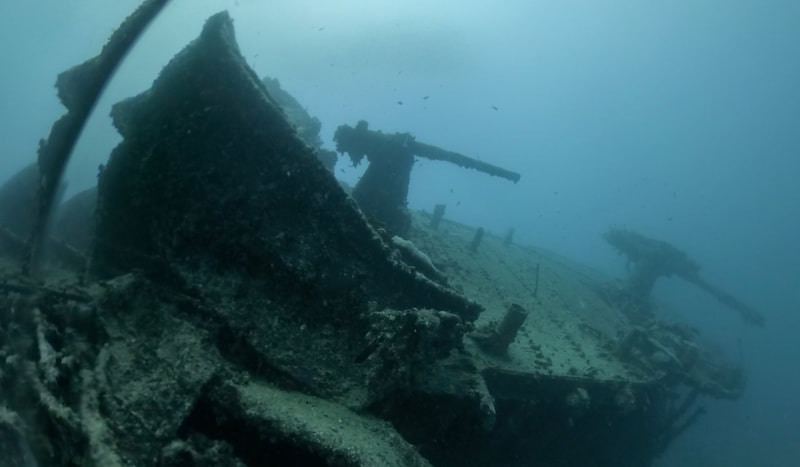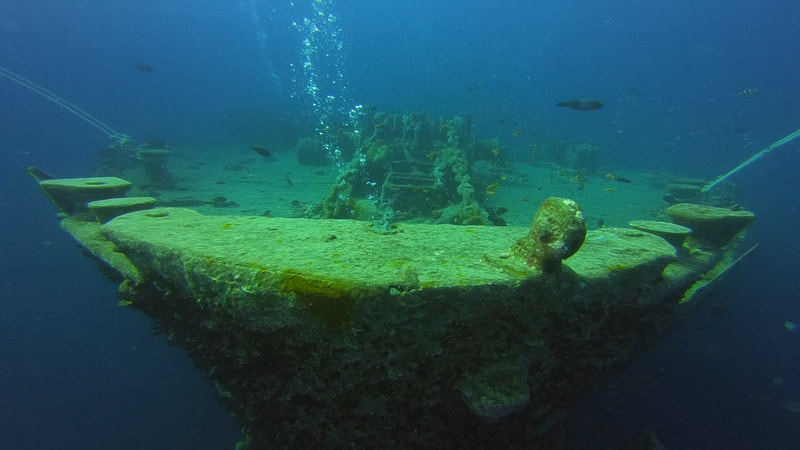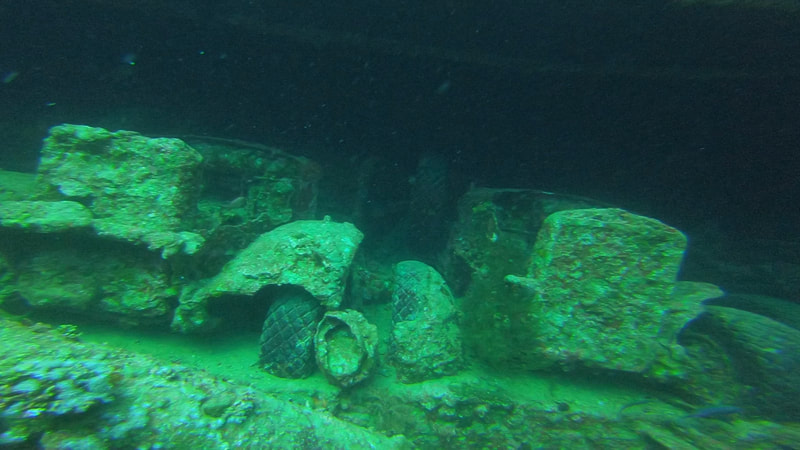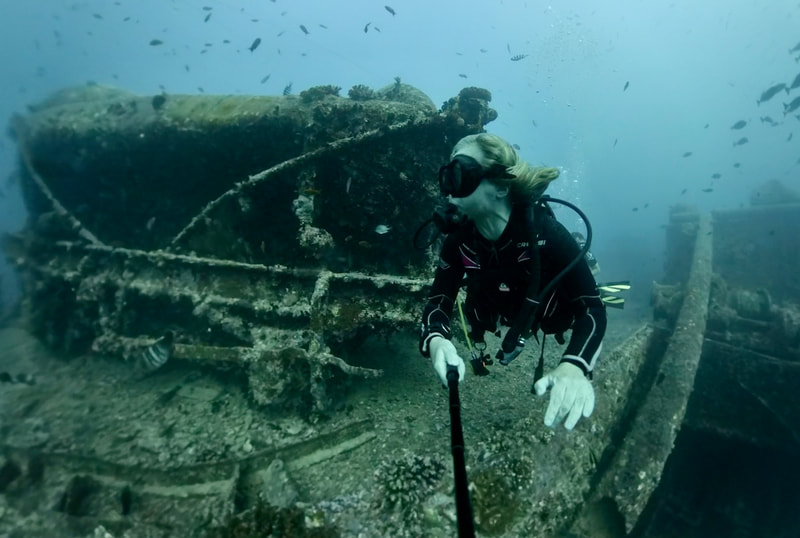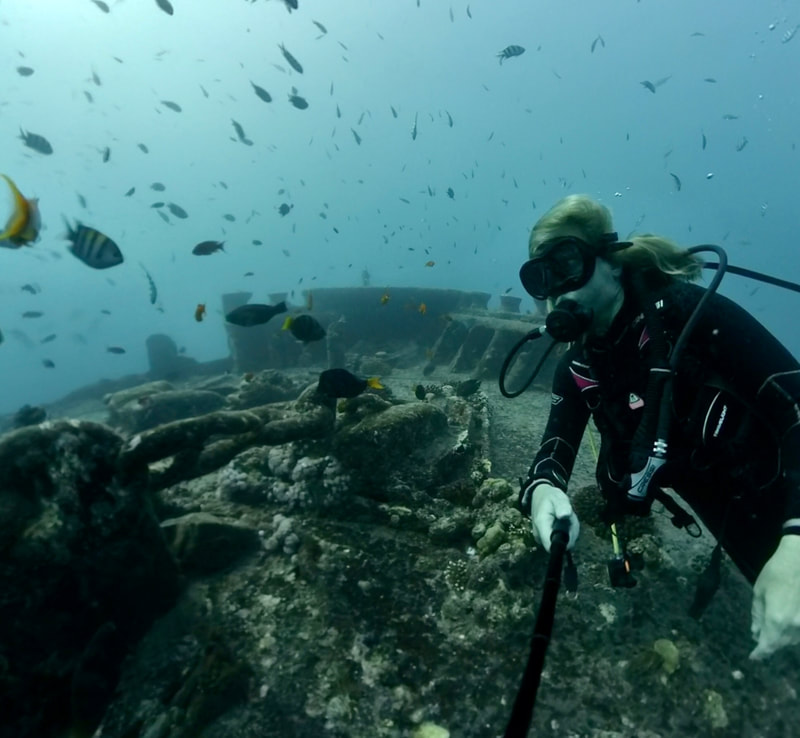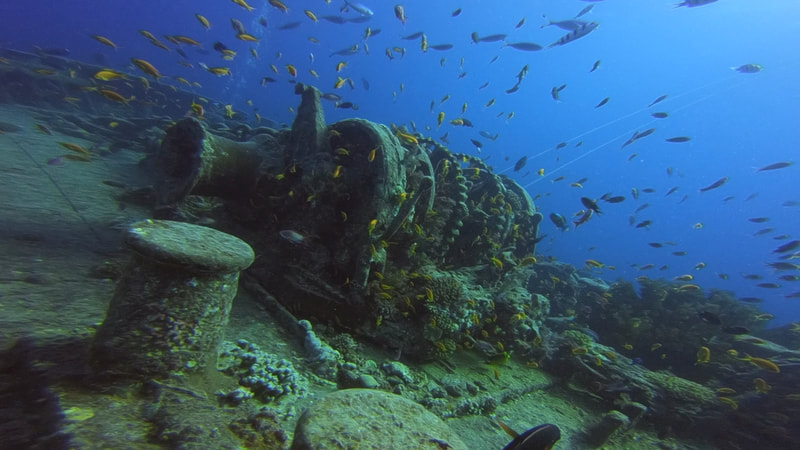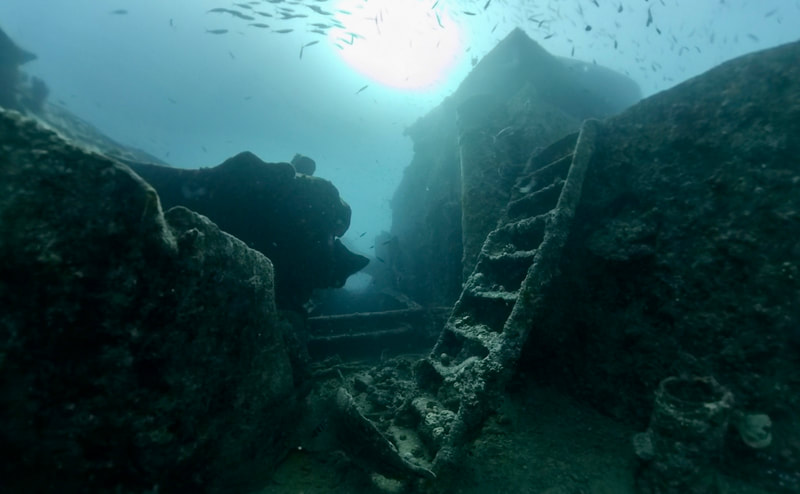Thistlegorm - the world's most famous wreck!
After a summer of hard work in Stoney Cove, several of our instructing team headed for a well-earned break diving in the Northern Red Sea. We sailed in our liveaboard from Hurghada and our itinerary encompassed the world renowned wreck of the Thistlegorm. In this blog, we dive into the depths of history and discover a legendary wreck that has captivated divers from around the globe. Situated in the stunning waters off the Sinai Peninsula, this sunken treasure holds secrets and stories that are waiting to be unveiled.
Imagine a time when this mighty vessel sailed gracefully across the seas, carrying vital supplies during World War II. Little did anyone know that fate had something else in store for her. As we descend into the deep blue abyss, let us unravel how Thistlegorm met her tragic end and delve into the intriguing cargo it was once entrusted with.
Imagine a time when this mighty vessel sailed gracefully across the seas, carrying vital supplies during World War II. Little did anyone know that fate had something else in store for her. As we descend into the deep blue abyss, let us unravel how Thistlegorm met her tragic end and delve into the intriguing cargo it was once entrusted with.
How did the Thistlegorm sink?
In the heart of the night, on October 6, 1941, tragedy struck the Thistlegorm. The British merchant ship was anchored near Sha'ab Ali in the Red Sea when it came under attack from a German bomber looking for the Queen Mary. The vessel was loaded with a precious cargo destined for Allied forces in Egypt. The bombs rained down upon Thistlegorm's deck, igniting a devastating explosion in the magazine that ripped through its hull. The sheer force of the blast caused the ship to split into two sections and sink quickly to its watery grave.
For years, this historic event remained unknown and hidden beneath the ocean's surface until Jacques Cousteau stumbled upon it in 1952 during one of his expeditions. Since then, divers have flocked to witness this haunting underwater spectacle first hand.
The sinking of Thistlegorm is not just an ordinary maritime disaster; it created a time capsule frozen in history. To explore its wreckage is like stepping back in time - a chance to glimpse into what life was like during World War II and pay homage to those who served bravely aboard this ill-fated vessel. Today, Thistlegorm lies at a depth of approximately 30 meters (98 feet), resting on sandy seabed amidst vibrant coral reefs. Its remains serve as both an eerie reminder of war's devastation and an extraordinary dive site teeming with marine life.
Divers who venture here are greeted by scattered remnants that tell tales of wartime heroism - from motorcycles and trucks still resting in the holds to ammunition crates, rifles, aircraft wings and wellington boots. This sunken museum invites exploration but demands respect for its fragile historical artifacts. As we submerge ourselves into the mysterious depths surrounding Thistlegorm, we become partakers in preserving history while uncovering stories buried deep within these rusted walls. It is an experience not easily forgotten - one that leaves us humbled by mankind's resilience amidst adversity and grateful for the opportunity to witness such a remarkable relic of the past.
In the heart of the night, on October 6, 1941, tragedy struck the Thistlegorm. The British merchant ship was anchored near Sha'ab Ali in the Red Sea when it came under attack from a German bomber looking for the Queen Mary. The vessel was loaded with a precious cargo destined for Allied forces in Egypt. The bombs rained down upon Thistlegorm's deck, igniting a devastating explosion in the magazine that ripped through its hull. The sheer force of the blast caused the ship to split into two sections and sink quickly to its watery grave.
For years, this historic event remained unknown and hidden beneath the ocean's surface until Jacques Cousteau stumbled upon it in 1952 during one of his expeditions. Since then, divers have flocked to witness this haunting underwater spectacle first hand.
The sinking of Thistlegorm is not just an ordinary maritime disaster; it created a time capsule frozen in history. To explore its wreckage is like stepping back in time - a chance to glimpse into what life was like during World War II and pay homage to those who served bravely aboard this ill-fated vessel. Today, Thistlegorm lies at a depth of approximately 30 meters (98 feet), resting on sandy seabed amidst vibrant coral reefs. Its remains serve as both an eerie reminder of war's devastation and an extraordinary dive site teeming with marine life.
Divers who venture here are greeted by scattered remnants that tell tales of wartime heroism - from motorcycles and trucks still resting in the holds to ammunition crates, rifles, aircraft wings and wellington boots. This sunken museum invites exploration but demands respect for its fragile historical artifacts. As we submerge ourselves into the mysterious depths surrounding Thistlegorm, we become partakers in preserving history while uncovering stories buried deep within these rusted walls. It is an experience not easily forgotten - one that leaves us humbled by mankind's resilience amidst adversity and grateful for the opportunity to witness such a remarkable relic of the past.
What was the Thistlegorm’s cargo?
In 1941, the Thistlegorm embarked on a mission to deliver supplies to British troops stationed in Egypt. Its cargo consisted of an eclectic mix of goods that were crucial for supporting war efforts. From ammunition and weapons to trucks and motorcycles, everything was carefully loaded onto the ship. Amongst these military supplies were also everyday items that provided a glimpse into daily life during wartime. From boots and clothing to food provisions such as tinned meat and biscuits, the Thistlegorm carried essentials needed by soldiers far from home.
One particularly intriguing aspect of its cargo was the locomotives stored on its upper decks. These steam engines, intended for use in North Africa's vast railway network, aiding transportation of troops and supplies across challenging terrain, were blown clear of the wreckage and now lie on the sea bed.
Today, exploring the wreckage allows divers to witness this snapshot of history frozen in time underwater. The scattered remnants serve as a haunting reminder of both human triumphs and tragedies during times of conflict.
In 1941, the Thistlegorm embarked on a mission to deliver supplies to British troops stationed in Egypt. Its cargo consisted of an eclectic mix of goods that were crucial for supporting war efforts. From ammunition and weapons to trucks and motorcycles, everything was carefully loaded onto the ship. Amongst these military supplies were also everyday items that provided a glimpse into daily life during wartime. From boots and clothing to food provisions such as tinned meat and biscuits, the Thistlegorm carried essentials needed by soldiers far from home.
One particularly intriguing aspect of its cargo was the locomotives stored on its upper decks. These steam engines, intended for use in North Africa's vast railway network, aiding transportation of troops and supplies across challenging terrain, were blown clear of the wreckage and now lie on the sea bed.
Today, exploring the wreckage allows divers to witness this snapshot of history frozen in time underwater. The scattered remnants serve as a haunting reminder of both human triumphs and tragedies during times of conflict.
The wreck today!
The wreck of the Thistlegorm stands as a testament to both nature's power and human history. Resting at the bottom of the Red Sea, it has become an underwater oasis for divers from around the world. Today, this iconic shipwreck attracts adventure seekers and history buffs alike.
As you descend into the depths, you are met with a hauntingly beautiful sight. The Thistlegorm lies upright at the bow on the sandy seabed, its stern twisted from the blast and its contents scattered across a large area. The holds are still intact, but time and marine life have taken their toll. Yet, even in its decayed state, it exudes an undeniable aura of mystery and intrigue. Despite being submerged for over 75 years, many artifacts from its cargo can still be found within its rusted hallways. From motorcycles to trucks to ammunition crates, these relics offer a glimpse into a bygone era. Exploring these remnants brings forth a mix of emotions - awe at their preservation and respect for those who lost their lives aboard.
Diving amidst this wreckage is like stepping back in time; every corner holds hidden stories waiting to be uncovered. The marine life that now calls this wreck home adds another layer of fascination to the experience. Schools of colorful fish dart through open doorways while coral formations adorn what remains of the ship's structure.
Preserving treasures like the Thistlegorm is crucial not only for historical value but also as habitats for marine life. Divers must exercise caution when exploring so as not to disturb or damage this delicate ecosystem. The legacy of the Thistlegorm lives on beneath the waves - an enduring reminder of our past intertwined with nature's relentless force. It serves as a poignant symbol that even in destruction there can exist beauty and resilience.
The wreck of the Thistlegorm stands as a testament to both nature's power and human history. Resting at the bottom of the Red Sea, it has become an underwater oasis for divers from around the world. Today, this iconic shipwreck attracts adventure seekers and history buffs alike.
As you descend into the depths, you are met with a hauntingly beautiful sight. The Thistlegorm lies upright at the bow on the sandy seabed, its stern twisted from the blast and its contents scattered across a large area. The holds are still intact, but time and marine life have taken their toll. Yet, even in its decayed state, it exudes an undeniable aura of mystery and intrigue. Despite being submerged for over 75 years, many artifacts from its cargo can still be found within its rusted hallways. From motorcycles to trucks to ammunition crates, these relics offer a glimpse into a bygone era. Exploring these remnants brings forth a mix of emotions - awe at their preservation and respect for those who lost their lives aboard.
Diving amidst this wreckage is like stepping back in time; every corner holds hidden stories waiting to be uncovered. The marine life that now calls this wreck home adds another layer of fascination to the experience. Schools of colorful fish dart through open doorways while coral formations adorn what remains of the ship's structure.
Preserving treasures like the Thistlegorm is crucial not only for historical value but also as habitats for marine life. Divers must exercise caution when exploring so as not to disturb or damage this delicate ecosystem. The legacy of the Thistlegorm lives on beneath the waves - an enduring reminder of our past intertwined with nature's relentless force. It serves as a poignant symbol that even in destruction there can exist beauty and resilience.
